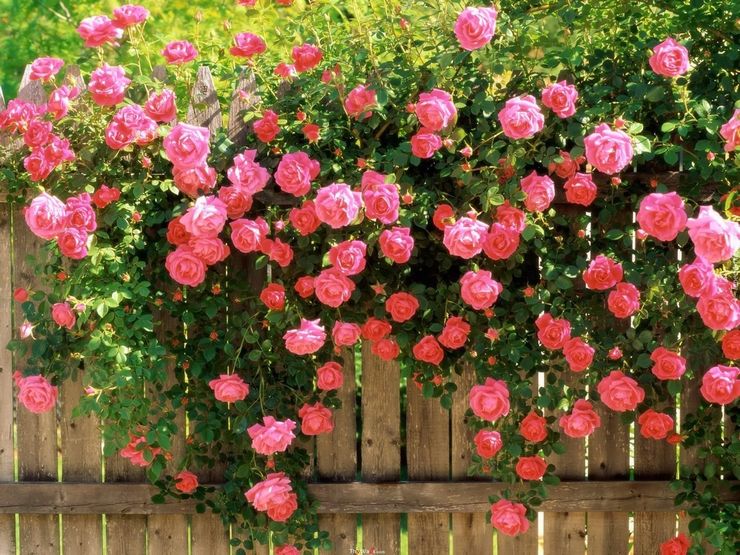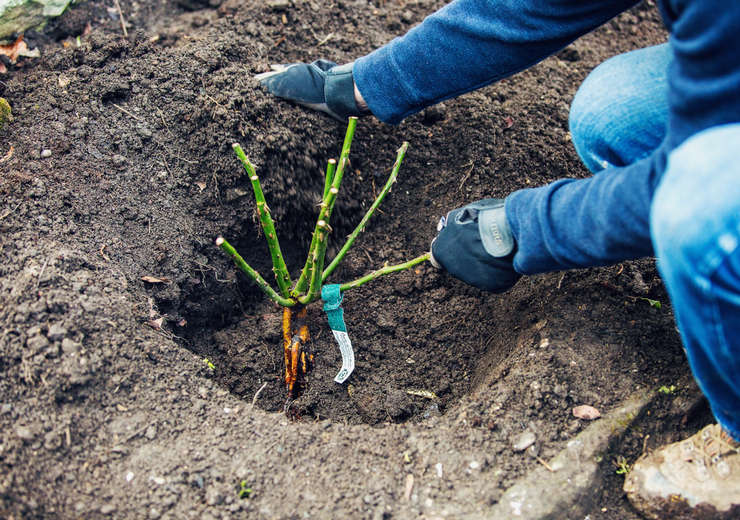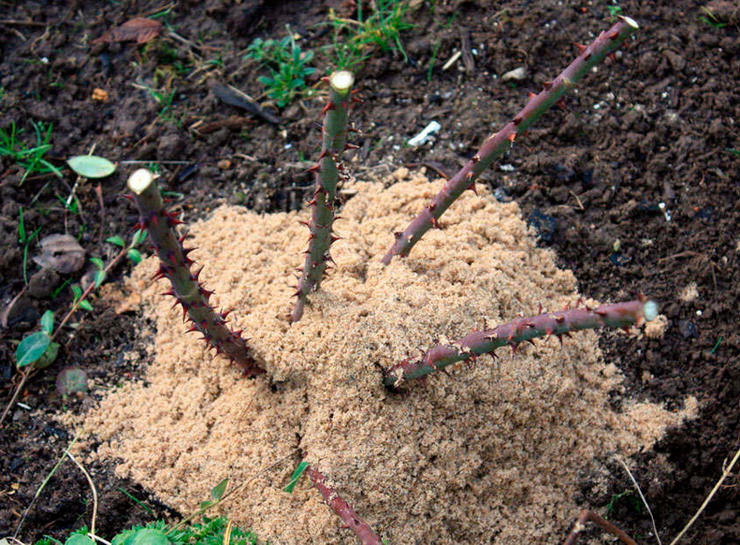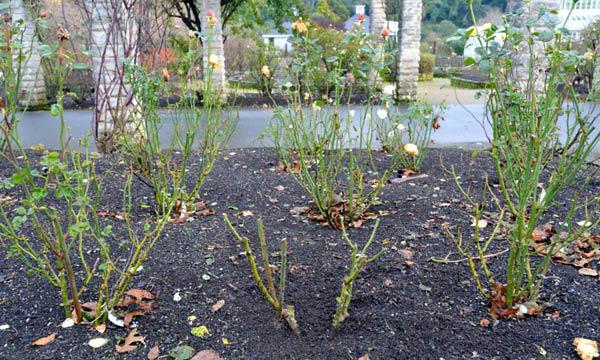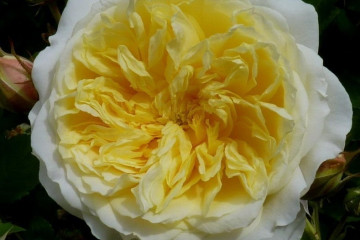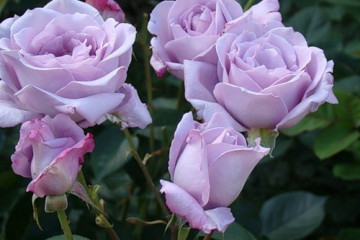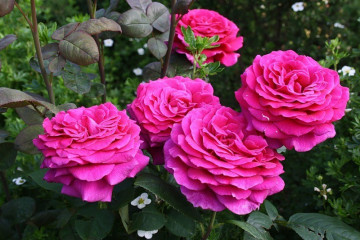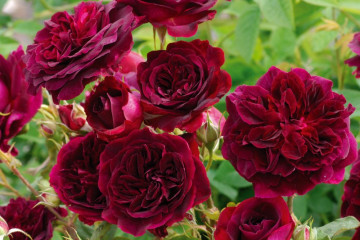Rose Penny Lane - characteristics of a varietal plant
Content:
The creator of the variety is the world famous English company "Harkness Rose". She has released a variety, the characteristic features of which are the ability to curl thanks to flexible shoots. In 1998, among climbing species, the plant was awarded the title "Rose of the Year" in the UK. Penny Lane successfully combines the charm of vintage garden roses with continuous flowering.
Brief description of the variety
Long shoots allow the flowering plant to rise high and cover up to 5 m of space with its branches. Penny Lane rose is the first representative of a new generation of climbing roses. The variety is distinguished by an abundance of flowering.
Leaves are dark green, shiny. Blooms early in the summer season. The inflorescences consist of many petals of light apricot tones, collected in a brush. Flowers are densely double, have a light aroma. At the beginning of flowering, you can notice pink shades, but under the rays of the bright sun, the flowers brighten. Flower tassels contain up to 11 flowers.
While maintaining good conditions, the bushes grow up to 5 m in height and 3 m in width.
Advantages and disadvantages of the variety
Climbing rose benefits:
- long-term continuous flowering;
- incomparable with anything in the improvement of territories;
- endurance in partial shade and cold;
- disease resistance.
The weak point is the fear of drafts.
Use in landscape design
Climbing roses occupy a special position in the arsenal of experienced designers. They look great in single and group plantings. The planted bushes near the wall of the house, along the paths, transform household plots, turn ordinary wooden fences into a work of art.
They grow quickly. In a short time, this special variety of roses not only gives beautiful flowering, but also creates places in the summer heat where it is cool, you can hide in the shade. Perfectly solves the aesthetic problems of country gardens.
English gardeners recommend combining climbing roses with purple clematis, they are especially attractive in flower duets.
Growing a flower
It is preferable to plant roses with seedlings, layering.
The growth and development of flowering crops is seriously influenced by the time at which planting is carried out. The bushes planted in early spring can soon please with the appeared dense greenery and numerous new shoots. Autumn planting promotes good rooting and strengthening prior to the winter season. These seedlings usually bloom luxuriantly in the spring.
Seat selection
The variety is located in places where the sun shines and warms in the first half of the year, and in the afternoon there is only a light mesh shadow. Night dew accumulated on branches and leaves dries up, and this is a positive factor in the prevention of fungal diseases.
Experts advise placing a flower plot on the south side of the building. To plant climbing roses, you need a strip of soil 0.5 m wide. Plants should be at a distance of 0.5–1 m from any buildings.
How to prepare the soil and flower for planting
Prepare the soil for planting in advance. In the selected area, groundwater should not lie close to the surface. Ideal for planting a climbing loam rose. Sandy soil can be corrected by adding clay when digging. It is enough to add sand to the clay soil to meet the requirements for growing roses.
A site is dug up with the addition of humus, peat, lime to the soil. Then, after some time on the day of planting, holes are prepared in the soil with a volume of 50 cm X 50 cm X 50 cm. A little manure, clay is introduced into each hole and diluted with water (the consistency of thick sour cream). At the rate of 3 liters, sweep is added 1 tablet of phosphorobacterin.
Planting procedure step by step
Step-by-step description of landing:
- The seedling is plunged into the hole so that the roots are at a depth of about 10 cm.
- Then it is covered with soil, and the earth is compacted.
- After planting, the soil should be mulched. You can use straw, dry grass, or sawdust.
The distance between the holes is maintained at about 1 m.
Plant care
Plentiful watering is required per week (2 watering cans 1 time). In dry hot weather, it is advisable to irrigate with a fine spray nozzle at sunset. However, fungal diseases can appear from an excess of moisture. Therefore, everything should be in moderation.
Top dressing and soil quality
According to Harkness, the creator of this climbing rose variety, systematic feeding is necessary:
- 1st feeding is carried out in May;
- 2nd - in July.
Recommended for 10 liters of water:
- mullein - 1 kg;
- superphosphate - up to 30 g;
- potassium salt - up to 20 g.
Pruning and replanting
Timely pruning of a Penny Lane rose preserves and enhances its exotic appeal. Cut off branches that are dry or frozen in winter, also remove shoots at the end of flowering, as well as dried, wilted inflorescences.
Adult bushes are transplanted only if the plant does not match the place of growth. This procedure is done in the fall from September to early November, depending on weather conditions. Spring transplantation is allowed until the kidneys awaken. Plants are removed from the support during transplantation, while young shoots need to be pinched at the end of August so that they have time to lignify. Cut off the stems that are older than two years, and cut the long ones in half.
To dig a bush out of the ground, you need to dig it in a circle, stepping back from the center at a distance equal to two bayonet shovels. We must not forget about the depth of the roots, therefore, they must be removed from the soil carefully, trying not to damage. Then shake off the soil and conduct a thorough examination of the root system. Damaged ends must be carefully removed with pruning shears.
Features of wintering a flower
According to the observations of flower growers, the Penny Lane rose tolerates the winter safely. Shelter for the cold season is encouraged. Roses come out of dormancy healthy and delight with lush flowering.
Blooming rose
There are differences between roses in the nature of flowering:
- roses blooming once a year;
- re-blooming.
A period of activity and rest
Spring and summer in the plant world are marked by the activity of growth, flowering, fruiting. A group of modern-breeding roses, which include climbing varieties, bloom twice during the active season. Then comes a period of rest. Plants prepare themselves for a new period of activity during the fall and winter.
Care during and after flowering
Varietal and climatic features dictate the rules of care, including watering, timely feeding. After flowering, preparations begin for a new period of life - wintering.
What to do if it does not bloom
Factors of growth, prosperous development and lush blooming of roses are:
- correct landing in compliance with the requirements;
- properly secured wintering of plants.
The reasons that the bushes do not bloom can be hidden in difficult climatic conditions, a place in the sun, wintering and normal care.
With a careful analysis of the conditions, correcting shortcomings, rose Lane will delight with the beauty of the inflorescences.
Flower propagation
Reproduction of roses is carried out by planting seedlings.
- Spring transplanting of seedlings is carried out at the end of March - April.
- Autumn - during leaf fall (in October - November), when a cold snap sets in, the temperature drops from 10 ° C to 0 ° C, the movement of sap stops, the plants go into a state of dormancy.
Climbing roses are propagated in a vegetative way, they regenerate very quickly, so immunity does not decrease, diseases do not arise. The plants are strong. The planted leaves or offspring acquire their own roots, from which new specimens with parental genes grow.
Diseases and ways to deal with them
Climbing roses turned out to be hardy, viable. They are not afraid of common diseases such as powdery mildew and black spot.
However, unfavorable climatic conditions, non-observance of the rules of agricultural technology, careless handling of plants lead to diseases and damage. Therefore, you should always carry out preventive spraying.
Thus, the Penny Lane rose is worthy of growing every lot. The main thing is to choose the right seedling, plant it in a suitable place and provide decent care.
